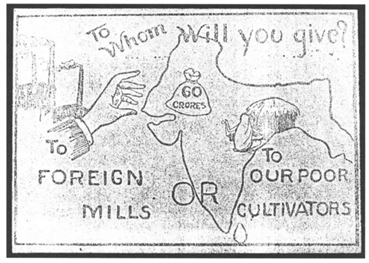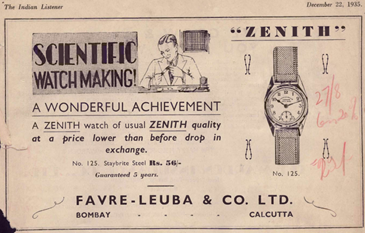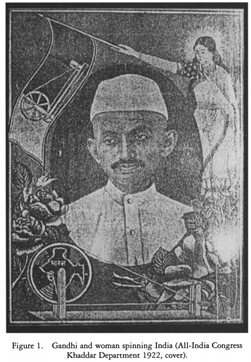Swami Dayanand in 1873 made Swadeshi as an article of Faith. Post that #AtmaNirbhar Bharat campaign had three phases <Pre-47>, each resulting in some Hits and misses. But in totality, it did shape a few things which we see today in things around us. This  https://abs.twimg.com/emoji/v2/... draggable="false" alt="🧵" title="Thread" aria-label="Emoji: Thread">is about all that
https://abs.twimg.com/emoji/v2/... draggable="false" alt="🧵" title="Thread" aria-label="Emoji: Thread">is about all that
The first version of Swadeshi was developed in Western India. Tilak, along with Govind Ranade, Gopal Agarkar <Agarkar Chowk in Andheri> extended the Dadabhai’s Economic Drain theory and would eventually be called for a boycott campaign <first phase of nationalism> in 1896
Around the same time, these events happen:
1. Jamsetji Tata rename newly purchased Dharamsi Mills as the Swadeshi Mills <1886>, ironically 1st mill was Empress <Nagpur>
2. Profullachandra Roy started his Bengal Chemicals in Calcutta <1893>, Satis Mukherji started Dawn Society
1. Jamsetji Tata rename newly purchased Dharamsi Mills as the Swadeshi Mills <1886>, ironically 1st mill was Empress <Nagpur>
2. Profullachandra Roy started his Bengal Chemicals in Calcutta <1893>, Satis Mukherji started Dawn Society
3. Godrej got started with surgical instruments <1897> & Security material soon their biggest hit: Desi Typewriter
4. Punjab National Bank was set up opposite Arya Samaj Mandir in Anarkali Bazaar <Lahore> in 1894 by Dyal Singh Majithia <Tribune newspaper>
5. Tilak& #39;s ‘Paisa Fund’
4. Punjab National Bank was set up opposite Arya Samaj Mandir in Anarkali Bazaar <Lahore> in 1894 by Dyal Singh Majithia <Tribune newspaper>
5. Tilak& #39;s ‘Paisa Fund’
All these individuals& #39; efforts were still like the Garage Startups, and were looking for their Booster event/trigger. Today, many in India are fighting for separate statehood. Now, Lord Curzon& #39;s idea of dividing Bengal<for better management> was that DeMo moment of that era.
Bengal during that time was too big a state <Today’s WB, Bangladesh, Assam, Orissa, JH & Bihar>. While Curzon division <1905> was for administrative efficiency. It was treated as another divide-and-rule policy ploy. Here comes the improved version of Swadeshi’
Muslim League will be formed in 1906 at Dhaka. Rabindranath Tagore will write “Sonar Bangla” to inspire the people emotionally. And, Swadeshi call of ‘Buy Indian and boycott British goods<esp Cloth>’ will be given by Congress (and others). Meet: Ranchhodlal Chhotalal
He started his career as a clerk in EIC, and by 1847 had started a mill in Bombay. That had encouraged many Jain Bankers to start cotton mills in Ahmedabad. Swadeshi movement had now led to a spurt in the demand for Indian-made textiles, thus ~200 new mills in Western India
The Tatas will use Swadeshi agitation when they appeal to this patriotism and raise money for their most ambitious project. Read more about this 1907 event https://twitter.com/sidart_misra/status/1251164634607833088">https://twitter.com/sidart_mi...
Back in Bengal: Sarala Devi <daughter of Janakinath Ghosal & from Tagore Family> opened “Lakhir Bhandar” in the Bowbazar neighbourhood of Calcutta that sold only Swadeshi products <1904>. Bangalakshmi Cotton Mill got started <1906>. Soon these mills will focus on something else
The Bengal Hosiery Co. was started by Muslim landlords and merchants, their success will make Bengal a major hub for hosiery, now understand why Bangladesh is so good in this. Footwear and tannery, flour mills, pottery and soap-making were also got started as cottage industries
Taking a clue from Ishwarchandra Vidyasagar’s Hindu Annuity, few insurance companies were formed. And in Madras on 15 August 1907 Indian Bank was started by Krishnaswamy Iyer, an activist lawyer. The Bombay store started in Bombay by Munmohandas Ramji.
By 1909, Congress started printing the Directory of Indian Goods and Industries. Indigenous entrepreneurship also got spread into other consumer goods, like matchboxes and cigarettes. But it was not one-way traffic. Swadeshi dacoities were on rise and a counteract was also done.
India was a big market for American companies, like BAT <cigarettes>. So, they started setting up their factories in Bengal to convince locals. It worked also since many Indian products were NOT as good. Thus, MNCs <Lever& #39;s> managed to win back their customers.
The Last Phase:
Few more products like Calcutta Chemical Company < @swapan55 family> will launch Margo, Godrej will start their Desi Soap and Tata& #39;s will do many businesses. But the movement had taken a Hit. Also, there was an Anti-Non-Co-operation Society in Bombay by 1920
Few more products like Calcutta Chemical Company < @swapan55 family> will launch Margo, Godrej will start their Desi Soap and Tata& #39;s will do many businesses. But the movement had taken a Hit. Also, there was an Anti-Non-Co-operation Society in Bombay by 1920
WIth the curtailed imports of foreign goods & limited production of it in India. The common man was devastated by the increase in domestic prices of commodities/products. Farmers will rebel <Salt Satyagraha> and the freedom struggle picked up steam as a political repercussion.
Gandhi had been toying many ideas to drive Nationalism and now he picks Swadesi <he was anyways mentee of Tilak>, despite his call of the de-industrialisation of India <1920>. Thus, the movement had picked up steam in the 1920s <again>. He also pushed for hand-woven cloth <Khadi>
The three Lalbhais brothers will set up Arvind Mills to produce superfine fabric in the backdrop of the Swadeshi Movement of Gandhi. So will do the family members of the Opium King in India.
Read: https://twitter.com/sidart_misra/status/1271595008760651778">https://twitter.com/sidart_mi...
Read: https://twitter.com/sidart_misra/status/1271595008760651778">https://twitter.com/sidart_mi...
In 1923 a teenager who used to bottle a soft drink brand imported from Britain, decided to manufacture a soft drink <inspired by Gandhi> with a unique alcohol-like taste and named it Whisky No. It was launched in the state of Gujarat.
His fifth son <Jamnalal Bajaj> will soon play a key role. Gandhi actually acted like a matchmaker when he asked Bajaj to take over Mukund Steel since Mukund Agarwal wanted to leave the business and join him. Another key project was Hindustan Sugar Mills <1931> in Lakhimpur Kheri
Let& #39;s move to Punjab: Punjab had a very strong connect with the British Army and hence were exposed to machines as used by their English Sahibs. One day an English guy will ask a local Mochi to sew this football, thus it will trigger Sport Industry in Sialkot <post 47 Jalandhar>
Same way, inspired by their Sahibs Cycles and to reduce the imports. Some components, such as lamps, bells, stands, and carriers, will begin to be manufactured at Ludhiana by 1930s. Bishandas Basil <from Ludhiana>, will develop an Indian-made sewing machine (“Usha”) in Calcutta.
Mohanlal Dayal& #39;s family were primarily traders of silk and embroidery imported from Europe. It was under the influence of the Swadeshi movement that they switched to manufacturing confectionery in 1929. And will launch our iconic brand of Comfort Food.
The movement will also inspire Abanindranath to incorporate elements of Chinese and Japanese calligraphy into his Mughal-inspired paintings of epic stories, and produced one of his most famous pieces—a depiction of Bharat Mata, or Mother India.
Swadeshi warcry thus had multiple meanings. For some it essentially signified our capacity to become a self-sufficient industrial nation; for others, like Gandhi, it was more about rejecting foreign machines and unpatriotic lifestyles and returning to traditional goods & tastes.
Let me end this thread with an interesting point. Motilal Nehru, was among the first Indian to own an automobile <1907>. Criticized for purchasing a foreign vehicle, he wrote to his son, “Would you advise me to wait till motor cars are manufactured in India”

 Read on Twitter
Read on Twitter







